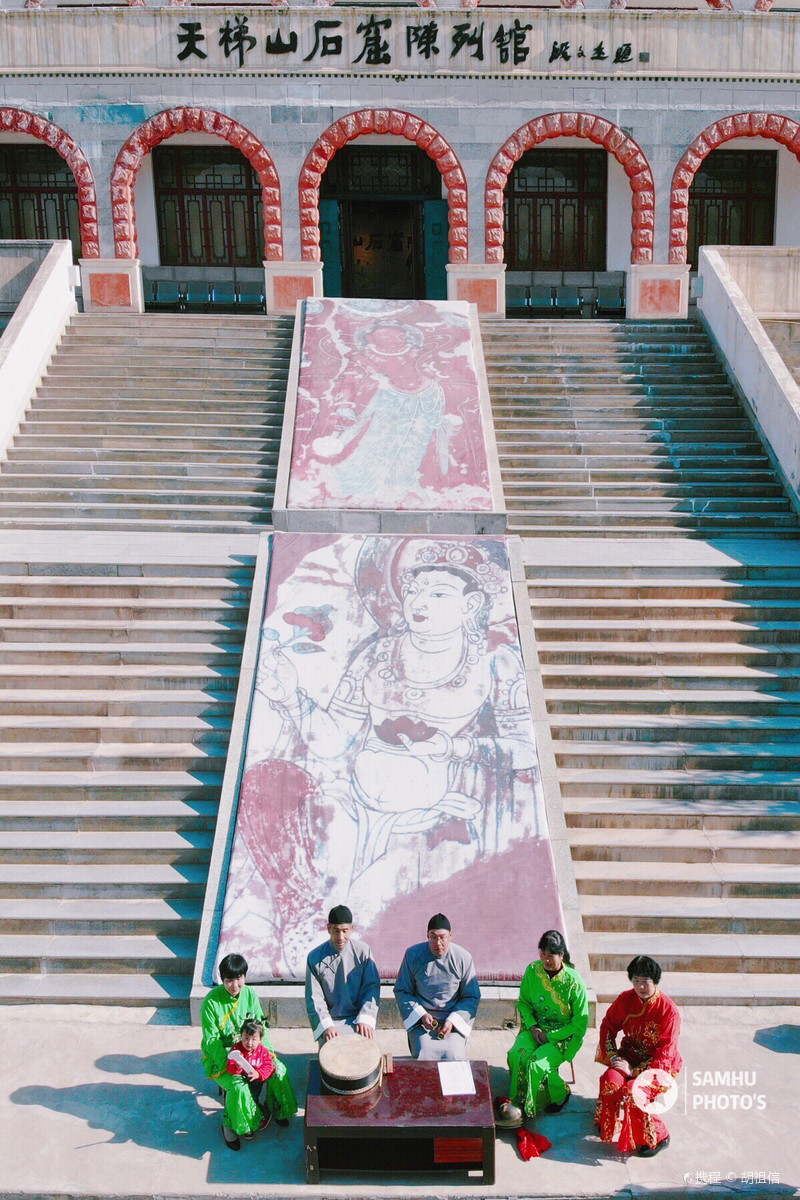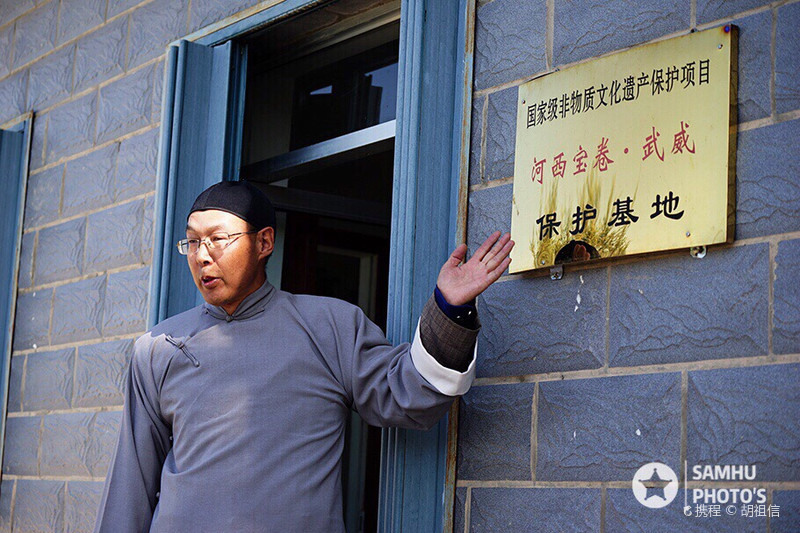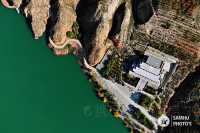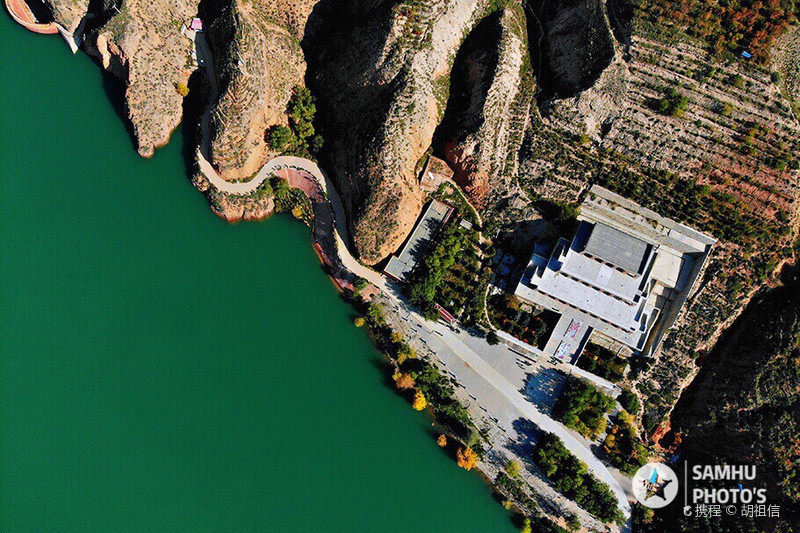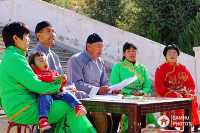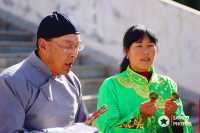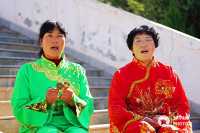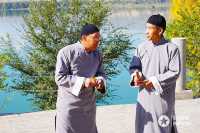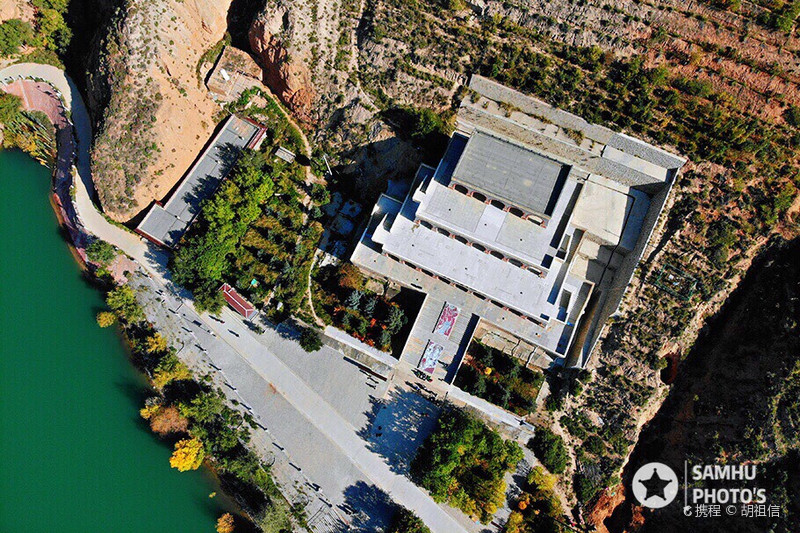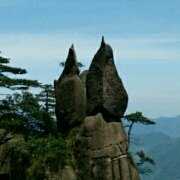Listen to the thousand-year-old Hexi Bao scroll. Hexi Bao scroll is a traditional folk chanting folk literature developed on the basis of Dunhuang's changing texts, common sayings and Song Dynasty's scriptures. Baojuan was produced in large numbers in the Ming and Qing dynasties and prevailed in many places in the country. In the vast rural areas of Hexi area in Gansu today, Baojuan still has a vigorous vitality. In 2006, Hexi Baojuan was listed in the first batch of national intangible cultural heritage lists. The Baozhan in Hexi has four types of Buddhism, historical story, myth and legend, and allegory, the content reflects the social life of the people, and the theme condemns the perversity and murder, promoting filial piety and good deeds. The main form of the Hexi Bao Roll is the combination of rhyme and white during the lectern singing, and the main means of attracting listeners to actively participate in singing is "taking the sound of Buddha". Vernacular is a performance method used by the scroll to narrate the storyline, explain the development of the event, describe the relationship between the characters, and point out the time and place, and express it in the form of "talking" or "talking". The rhyme is to convey good and evil, promote the development of the storyline, express love and hate, and promote the atmosphere, and use the method of "singing" or "singing" to express it. Rhyme and sports treasures blended various tunes, and also added some Liangzhou folk songs, such as "Crying Five More", "Lotus Fall", "Ten Advice People" and so on. According to the investigation, there are about 30 volumes of Liangzhou Bao Roll scripts, mostly woodcuts and manuscripts, and some mimeprints appeared in the early 1980s. There are more than 70 kinds of lyrics and singing voices collected in Jiuquan Bao Roll, and the number of Bao Rolls reaches more than 70 kinds (including the existing list) more than 140 copies. Due to the development of rural economy and the change of living customs, few people have taken the initiative to hold activities to sing Bao Roll. Most of the people who are now over 70 years old are elderly. As this group gradually dies in the future, Hexi Bao Roll will face a crisis of extinction. Zhao Yufeng (picture 2), a disciple of Li Zuohan, a national heir of Hexi Baojuan (Wuwei Volume). As a staff member of the Tiantishan Grottoes Cultural Relics Conservation Institute, Zhao Yufeng's place of work is next to the Tiantishan Grottoes ticket hall: National Intangible Cultural Heritage Protection Project: Hexi Baojuan (Wuwei) Protection Base. Hope Zhao Yanfeng will be followed by someone, let Hexi Bao roll continue to sing! Detailed address: Dengshan Village, Middle Road Township, Liangzhou District, Wuwei City Traffic Guide: Take the shuttle bus to Haxi at Nanguan Station, about an hour to the Tiantishan Road intersection, and then walk for 25 minutes. Open time: 9:00-18:00, stop selling tickets at 17:00 Ticket price: 30 yuan. Highlights: Tiantishan Grottoes only have 3 floors, 17 large and small caves. The largest caves are 30 meters high, 19 meters wide and 6 meters deep. The cave has a statue of Sakyamuni, 15 meters high, 10 meters wide, and there are Wenshu, Puxian Bodhisattva on the left and right sides of the Buddha, Guangmu, Do-wen Tianwang, Jiaye, Anan and other 6 statues, vivid shape, majestic, and different images. Little Tips: To listen to Hexi Bao rolls, you must make an appointment in advance and pay for it separately.
;
Tiantishan Grottoes Exhibition Hall Review
4 /54 Reviews
Popular Destinations
Istanbul Travel | Nanjing Travel | Atlanta Travel | Cebu Travel | Osaka Travel | Suzhou Travel | Chicago Travel | Xi'an Travel | Bali Travel | Macau Travel | Rome Travel | Saipan Travel | General Santos Travel | Dallas Travel | Boracay Island Travel | Spain Travel | Bay Lake Travel | Charlotte Travel | Stuttgart Travel | Destin Travel | Montes Torozos Travel | Vicksburg Travel | Gorod Abakan Travel | Nepi Travel | Litomysl Travel | Pasuruan Travel | Burlington Travel | Furstenwalde Travel | Lago Argentino Department Travel | Mesilla Travel
Recommended Attractions at Popular Destinations
Bangkok attraction near me | Tokyo attraction near me | Manila attraction near me | Hong Kong attraction near me | Seoul attraction near me | Taipei attraction near me | Los Angeles attraction near me | New York attraction near me | Shanghai attraction near me | Shenzhen attraction near me | Kuala Lumpur attraction near me | Osaka attraction near me | Guangzhou attraction near me | Singapore attraction near me | London attraction near me | San Francisco attraction near me | Beijing attraction near me | Macau attraction near me | Bali attraction near me | Ho Chi Minh City attraction near me | Paris attraction near me | Orlando attraction near me | Jakarta attraction near me | Phuket attraction near me | Chicago attraction near me | Toronto attraction near me | Cebu attraction near me | Dallas attraction near me | Istanbul attraction near me | Dubai attraction near me
Popular Attractions
Salvador Dalí House Museum | Badaling Great Wall | Chimelong Safari Park | Antelope Canyon | Picasso Museum Barcelona | Yves Saint Laurent Mansion | Drach Caves | Shanghai Film Park | Tokyo Tower | Fushimi Inari Taisha | Field Museum | The Peak Tram | Intrepid Sea, Air & Space Museum | Manila Zoo | Madame Tussauds BANGKOK | Hungarian State Opera | Landschaftspark Reitscharde | Dieskauer Park | Câu Lạc Bộ Hùng Thuỷ | Maintalhang Kleinochsenfurter Berg | Complexe Sportif Gaston Lozzia | Parc de Scey | Carnival Magic Phuket | Summer Palace | Seville Cathedral | Victoria Harbour | Gulangyu Island | Universal Islands of Adventure | Huangpu River Tour(16 Pu Pier) | Akihabara Electric Town
Popular Travelogues
Bangkok Travelogue | Tokyo Travelogue | Manila Travelogue | Hong Kong Travelogue | Seoul Travelogue | Taipei Travelogue | Los Angeles Travelogue | New York Travelogue | Shanghai Travelogue | Shenzhen Travelogue | Kuala Lumpur Travelogue | Osaka Travelogue | Guangzhou Travelogue | Singapore Travelogue | London Travelogue | San Francisco Travelogue | Beijing Travelogue | Macau Travelogue | Bali Travelogue | Ho Chi Minh City Travelogue | Paris Travelogue | Orlando Travelogue | Jakarta Travelogue | Phuket Travelogue | Chicago Travelogue | Toronto Travelogue | Cebu Travelogue | Dallas Travelogue | Istanbul Travelogue | Dubai Travelogue
Popular Ranked Lists
Popular Nightlife Districts in Lijiang | Top 19 Fine Dining in Milan | Top 12 Fine Dining in Edinburgh | Popular Nightlife Districts in Hong Kong | Top 15 Fine Dining in Chongqing | Popular Premium Hotels Near Sucre | Popular Premium Hotels in Claremont | Popular Family-friendly Attractions Near Huangmei | Popular Luxury Hotels in Can Tho | Popular Family-friendly Attractions Near Shishi | Top 7 Fine Dining in Krabi | Popular Family-friendly Attractions Near Zhongxiang | Popular Luxury Hotels Near Kavos | Top 5 Fine Dining in Shenyang | Popular Nightlife Districts in Seoul | Popular Nightlife Districts in Las Vegas | Top 6 Bars in Changchun | Popular Nightlife Districts in Phuket | Popular Luxury Hotels Near North Lombok Regency | Popular Family-friendly Attractions Near Qian County | Top 4 Nightlife Districts in Tokyo | Top 4 Nightlife Districts in Osaka | Top 5 Nightlife Districts in Bangkok | Popular Nightlife Districts in Hong Kong | Popular Nightlife Districts in Dublin | Popular Nightlife Districts in Las Vegas | Popular Nightlife Districts in Phuket | Popular Nightlife Districts in Taipei | Popular Nightlife Districts in Chengdu | Popular Nightlife Districts in Jinghong
About
Payment Methods
Our Partners
Copyright © 2024 Trip.com Travel Singapore Pte. Ltd. All rights reserved
Site Operator: Trip.com Travel Singapore Pte. Ltd.
Site Operator: Trip.com Travel Singapore Pte. Ltd.

